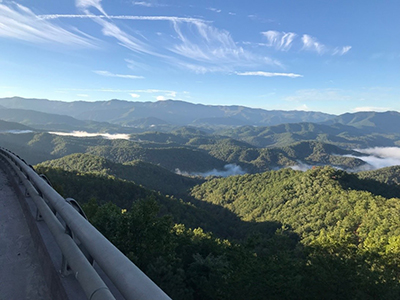
A new National Park Service (NPS) report shows that 11,421,203 visitors to Great Smoky Mountains National Park in 2018 spent $953 million in communities near the park. That spending supported 13,737 jobs in the local area. National park tourism is a significant driver in the national economy, with every dollar invested by American taxpayers in the National Park Service returning $10 to the economy.
“Year after year, the Smokies staff care for this special place and provide rewarding experiences for visitors,” said Superintendent Cassius Cash. “Since last November, we’ve welcomed nearly 1 million visitors to the new section of the Foothills Parkway, offering a new park experience with magnificent views of the highest peaks of the Smokies. We appreciate the long-standing support of our gateway communities and are glad to have this opportunity to give back by helping support the local economy.”
The peer-reviewed visitor spending analysis was conducted by economists Catherine Cullinane Thomas and Egan Cornachione of the U.S. Geological Survey and Lynne Koontz of the National Park Service. The report shows $20.2 billion of direct spending by more than 318 million park visitors in communities within 60 miles of a national park. This spending supported 329,000 jobs nationally; 268,000 of those jobs are found in these gateway communities. The cumulative benefit to the U.S. economy was $40.1 billion.
Lodging expenses account for the largest share of visitor spending, about $6.8 billion in 2018. Food expenses are the second-largest spending area and visitors spent $4 billion in restaurants and bars and another $1.4 billion at grocery and convenience stores.
Visitor spending on lodging supported more than 58,000 jobs and more than 61,000 jobs in restaurants. Visitor spending in the recreation industries supported more than 28,000 jobs and spending in retail supported more than 20,000 jobs.
Report authors also produce an interactive tool that enables users to explore visitor spending, jobs, labour income, value-added, and output effects by sector for national, state and local economies. Users can also view year-by-year trend data. The interactive tool and report are available at the NPS Social Science Program webpage HERE. The report includes information for visitor spending at individual parks and by state.
To learn more about national parks in North Carolina or Tennessee and how the National Park Service works with North Carolina and Tennessee communities to help preserve local history, conserve the environment, and provide outdoor recreation, go to www.nps.gov/NorthCarolina or www.nps.gov/Tennessee.
-NPS-
www.Facebook.com/GreatSmokyMountainsNPS
www.Instagram.com/GreatSmokyNPS
www.flickr.com/photos/greatsmokymountainsnationalpark
Subscribe to get the latest posts sent to your email.
The Great Smokies Welcome Center is located on U.S. 321 in Townsend, TN, 2 miles from the west entrance to Great Smoky Mountains National Park. Visitors can get information about things to see and do in and around the national park and shop from a wide selection of books, gifts, and other Smokies merchandise. Daily, weekly, and annual parking tags for the national park are also available.